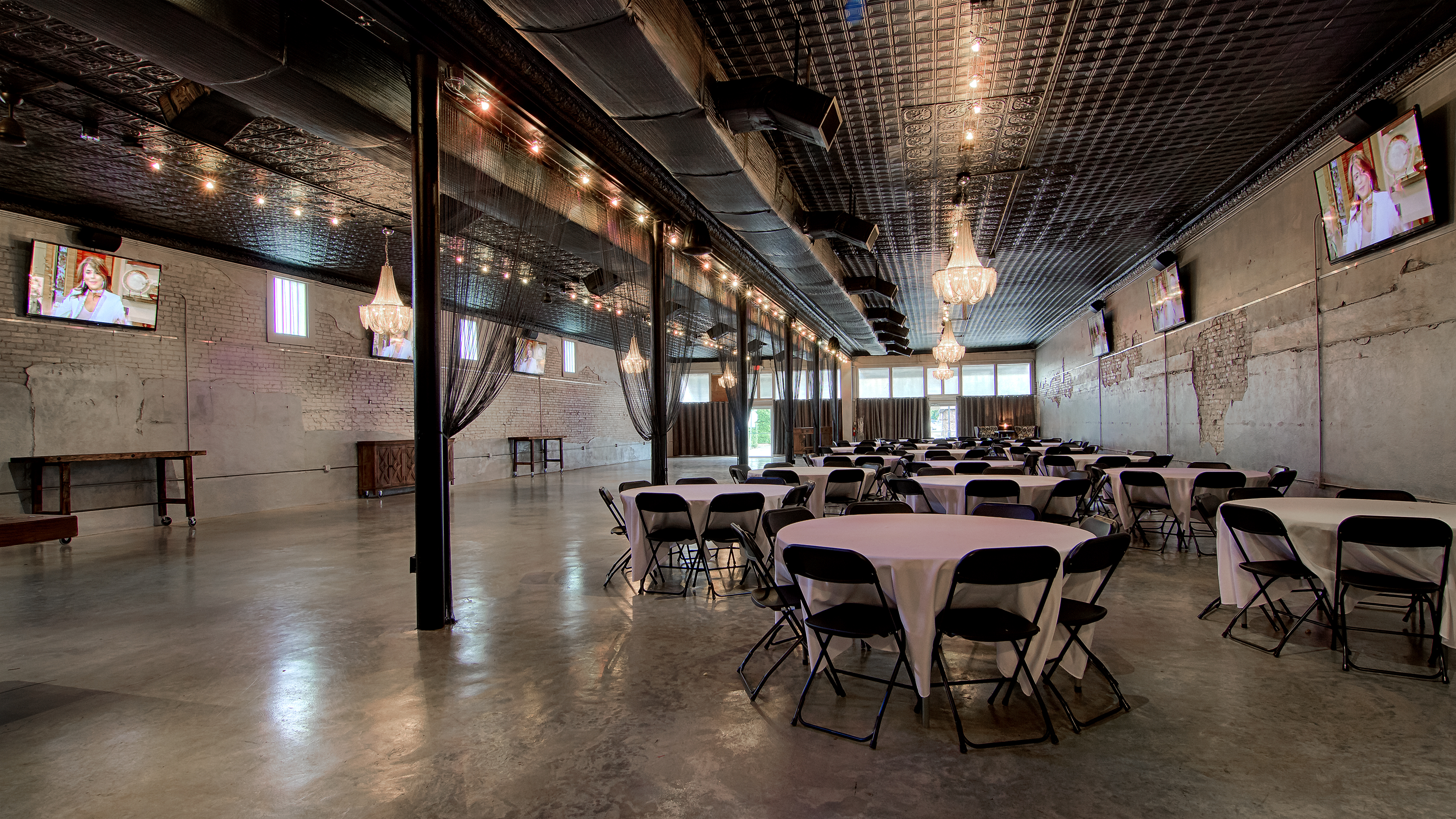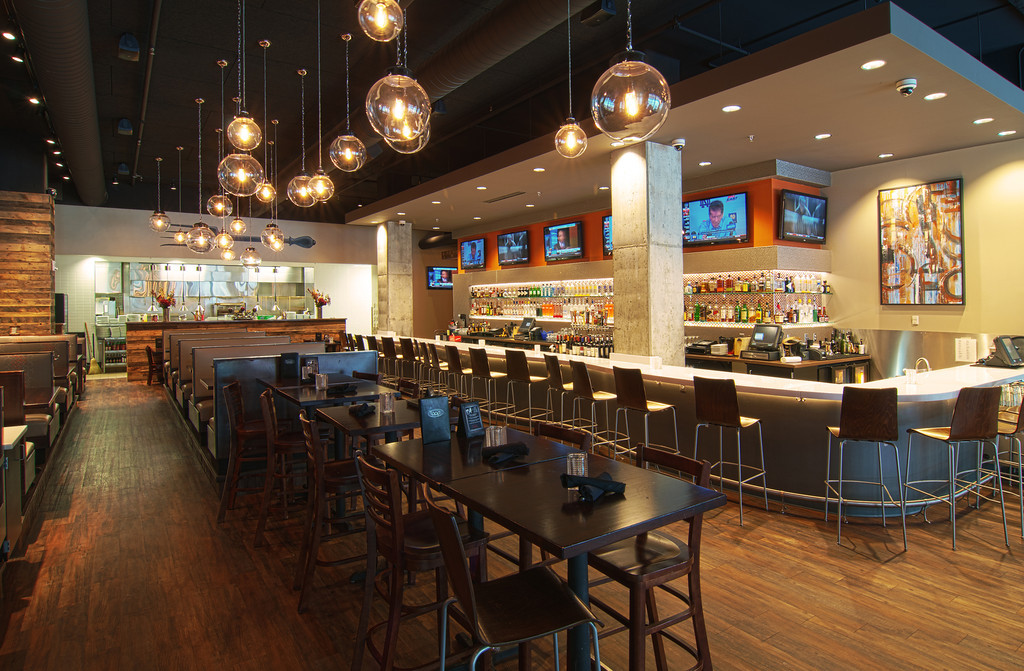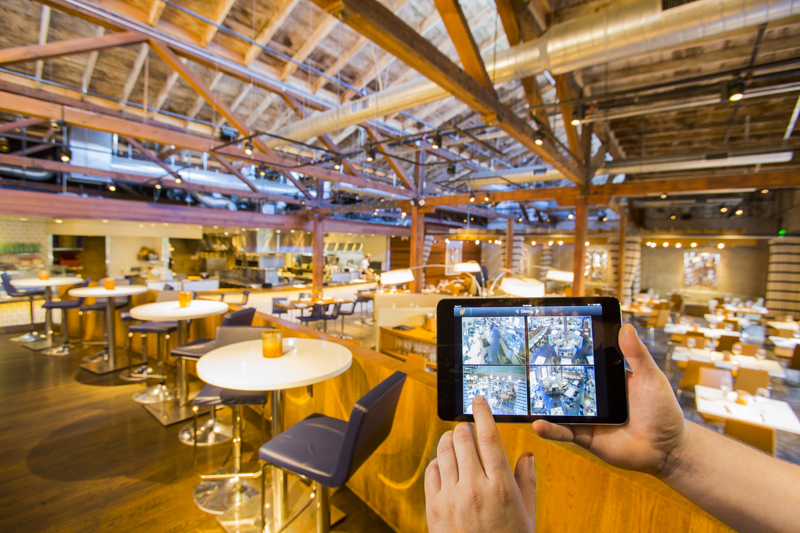Tech Talk: ‘It’s about taking the walls of a restaurant and turning them into a living, digital wrapper that is infinitely adjustable’
5 Min Read By MRM Staff
Creating a compelling brand experience for diners is one key element of restaurant success. Incorporating audiovisual experiences that combine sight, sound, content and space with audience measurement and beacon technology that are drawing in more customers to their restaurants. InfoComm is the global trade association that represents the commercial audiovisual industry. Founded in 1939, the organization has more than 5,000 members and recently welcomed more than 40,000 attendees to its trade show in Orlando.
In this edition of Tech Talk, InfoComm International Executive Director and CEO David Labuskes tells Modern Restaurant Management (MRM) magazine what the organization’s mission is and how it has evolved since its formation, identifies audiovisual trends and provides advice on creating compelling dining experiences.
What is InfoComm’s mission?
As the global trade association of the commercial audiovisual industry, InfoComm International strives to help make the world more connected, engaged and, yes, social through thoughtful audiovisual designs that combine content, space and technology into singular human experiences.
We have two main missions: to support our corporate members as a trade association and to help advance the careers of individual members as a professional society. In our efforts to increase industry awareness, we’re committed to showing customers how best to leverage audiovisual technologies to make the human experience more meaningful in the 21st century.

How has InfoComm evolved since its founding in 1939?
In a very broad sense, InfoComm has evolved from its original mission as an advocate for technology into an association equally focused on the outcomes enabled by technology. As such, we seek to collaborate with designers, architects, end customers, content producers — everyone who views audiovisual experiences as leading to better business outcomes.
What makes a compelling dining environment and how can audiovisual experiences support that?
Every dining environment is unique — the expression of a vision grounded in food and drink, but extended to the environment in which the meal is enjoyed. Creatively designed and thoughtfully implemented audio, video, lighting, and control are as important to the creation of a compelling dining environment as the interior design. Increasingly, audiovisual finishes make each space unique; things like video canvases, projection mapping, zoned lighting, and spatial audio create an immersive atmosphere.
The audiovisual experience has become an integral part of the architectural phase of a restaurant’s design.
Why do you feel providing an audiovisual experience for guests is important to restaurants?
Diners are surrounded by audiovisual experiences everywhere they go; they’re integrated into their lives—in their home theaters, on their smart phones, at the office, in stores, at the airport, basically everywhere. Now their dining experiences are an extension of the tech-centric world that they live in. Restaurants can leverage this reality to meet their own business goals. If people are relaxed, entertained, and engaged when they dine, they may be more likely to enjoy more of what a restaurant offers.
What trends are you noting in audiovisual design?
The audiovisual experience has become an integral part of the architectural phase of a restaurant’s design. It’s no longer an afterthought—something that’s bolted on after the walls are up and the furnishings installed. Restaurant owners are audiovisual consumers, too, living in the same digital age as their customers. They understand that technology has to be an integral part of the experience. Walls can be digital canvases; projection mapping can create images that change with the season or time of day; audio can create a compelling atmosphere. But they are all most effective when considered early in the process.
And the possibilities are limitless. You may have seen video on the Internet of a 3D projection system that shows a tiny, virtual chef on a dinner plate actually creating a meal in front of diners’ eyes. It’s creative, entertaining—certainly an experience—and just one example of how restaurants might use audiovisual technology to connect with patrons.
What do you envision the restaurant of the future looking like?
A comforting mix of sight, sound and content, operating seamlessly in the space it was designed for. And if the owner wants to project a different theme, change the menu, or appeal to a new type of patron, his or her investment in audiovisual infrastructure can be leveraged again and again to create a new brand image.
Basically, it’s about taking the walls of a restaurant and turning them into a living, digital wrapper that is infinitely adjustable. It’s an exciting idea — and it’s real.
How does audiovisual technology promote efficiency in hospitality?
In a word: automation, a smart system that pulls together and manages that wrapper I referred to — maybe from a series of touch panels, or from tablets and smartphone devices. Many companies offer excellent solutions to control audio, video, lighting, shades, thermostats, door locks, security, customer flow and even sales. Controlling an integrated audiovisual experience is important, but doing so in a way that owners can gauge the outcomes they seek is an important benefit of today’s audiovisual technology.

Buffalo Wild Wings, a high-profile example of the use of audiovisual technology in hospitality, is also a major proponent of using that technology to manage experiences. The company gets the outcomes it wants by integrating smart controls. The video and audio are obviously engaging, but the restaurants use specialized audiovisual controls to create sub-zones that target groups with particular interests. Through automation, reconfiguring spaces and adjusting video and audio content is quick and easy. What you end up with is many concurrent audiovisual experiences that don’t interfere with each other and maximize the space. Other restaurant brands are following the same model.
What are the advantages of increasing audiovisual technology use in the hospitality industry?
The biggest advantage may be that customers stay longer and spend more in a restaurant that offers an exceptional experience. They’re also more likely to tell their friends—either by word of mouth or through real-time social media posts from right in the restaurant. A restaurant experience made exceptional through audiovisual technology is incredibly shareable, and it empowers restaurants to create unique brands that can evolve dynamically.
How are fears allayed regarding technology taking away from hospitality?
The whole idea is to create an environment through audiovisual experiences that enhances the hospitality experience, not take away from it. There are a large and growing number of experiential designers who understand how to do this in wonderfully creative and cost-effective ways.

In what ways can independent restaurants, which might have less resources, use audiovisual technology to their advantage?
Audiovisual experiences come in all sizes. One of the most compelling trends in our industry is that so many companies are creating new technologies, it’s driving down cost. By consulting a trained AV professional, restaurants can usually find solutions to fit any budget while still creating a new experience. And because most of the technology is not digital, audio and video experiences can be changed or adjusted without replacing entire systems. Ultimately, the content is so critical to an audiovisual experience. With a foundation of technology in place, restaurant brands can focus their efforts on the content that best defines their brand. Maybe an independent owner knows a graphic artist who can lend a signature look and feel using the audiovisual technologies available.
How can a restaurant owner learn more about how to best integrate audiovisual experiences into their restaurant?
Restaurateurs can visit the InfoComm website at www.infocomm.org to learn about audiovisual technology and experiences. They can also attend our InfoComm trade show, which is held every year in June. The show features a number of conferences and presentations that offer content and insight about audiovisual and experiential design.

